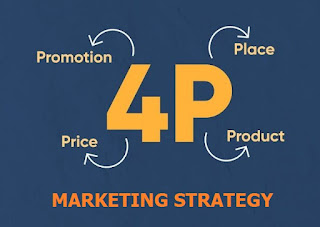7 Key Elements of Marketing Strategy
The term "strategy" encompasses a wide range of concepts. If we consider marketing strategy as an environment, the seven elements depicted in the diagram are the ones that make a significant difference in marketing strategy.
Each of these components is dynamic in its own right. When one element changes, it is natural for the others to change as well. Each of the seven essential parts of marketing strategy has its own set of dependent variables that define it.
As an example, a customer is more than just a client; he also includes variables like the company's customer service, the customer's expectations, his value definition, and many other variables that are constantly changing.
And then there's the mixture of these factors for a single element, namely the Customer. So, if marketing strategy has seven different important parts, you can see how many various variables are involved in establishing marketing strategy.
As a result, strategic decisions are always challenging and are left to the organization's most experienced personnel.
The most important aspects of marketing strategy are separated into two categories. The internal environment is one thing, and the outward environment is another.
Customers, corporations, and competition make up the internal environment (the environment over which the company has control). These are entities that the firm can control or affect in some way. As a result, these three entities create a triangle, each having an influence on the other.
The PEST environment is the external environment (an environment over which the organization has no control). The internal environment's decision-making is influenced by this environment. However, no internal environment entity can have an impact on the external environment.
Despite the fact that customers have the most power, technology, political, economic, and social factors can all alter at any time due to any incident. As a result, in order to survive in the exterior world, the inside environment must adapt quickly.
1. Client
The Customer is the reason why marketing is changing and why we need so many strategies in place. I am a consumer and am writing this article. My purchasing habits and decisions differ significantly from those of you who are reading this blog and are also customers.
Customers are the beginning point for any plan, and it proceeds ahead from there. As a result, most plans begin with segmentation, targeting, and positioning before moving further.
2. Organization
By corporation, we mean the company's internal strengths and shortcomings. SWOT analysis is a powerful analysis tool used by organizations to assess what they are capable of and what they cannot achieve. The corporation must do its own internal study and then make the appropriate decisions in order to build a plan.
3. A competitive environment
Both the corporation and the customers are affected by competition. Indeed, rivalry can contribute to the external environment, particularly the technological environment.
Combating competition is one of the most difficult issues in the internal environment – a difficulty that takes up the majority of the company's time and requires the most resources. Part of the reason for branding and marketing operations is the ever-increasing fear of competition.
4. The political climate
A country's political environment is influenced by a variety of factors. Control over policies, business friendliness, political structure, and a variety of other elements all contribute to a country's political and legal climate. Syria, Iraq, and Iran, for example, do not have a suitable political environment for enterprises.
5. The technological setting
This essay will be read on a smartphone by many of my readers. Was that really conceivable a decade ago? What happened to all those top-of-the-line businesses a decade ago? What happened to Nokia? Companies who do not adapt to the changing technological environment will fail. As a result, technology is an important part of marketing strategy.
6. The social setting
McDonald's changes its menu every time it expands into a new country. Because of the social milieu, this is the case. Beef is popular in the United States and the United Kingdom, but it is prohibited in India, and people avoid beef-serving hotels and restaurants. As a result, the social environment varies by location. The strategy varies depending on the social milieu.
7. The economic climate
If you want to introduce a high-end product, the economic climate of a country is critical. Many brands are exclusively available in wealthy countries, while some are not even available in developing countries.
This is due to the low GDP of developing and underdeveloped countries, which will not provide a premium established brand with the needed margins. As a result, when developing a strategy, you must choose the appropriate economic market to penetrate.
Even FMCGs evaluate a market's economy before entering it, despite the fact that FMCG items are renowned to be the most penetrative.
Overall, the aforementioned 7 aspects are crucial to designing an adequate marketing plan in the context of strategy.

Post a Comment for " 7 Key Elements of Marketing Strategy"